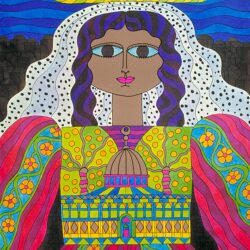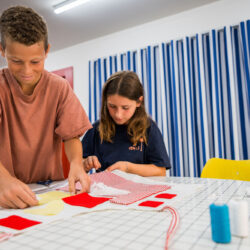Leaving the Nest: The role of fashion drawings in the creative process of designing

As the end of yet another school year approaches, work of students from different academies are ready to be showcased. Right in the heart of Antwerp, you can find one of the world’s most promising fashion departments who are about to send the newest generation of graduates out into the wide world through a dynamic digital platform.
In a sense the academy has preserved some very important steps in the process of fashion design, which makes for a beautiful paradox, as we just called them progressive. With the new students being the Web Generation, more and more schools are walking away from the drawing board. Unlike Antwerp, who is still holding pencil and paper as a first step in the creation of the fashion of tomorrow. Follow along as we explore why the drawing table is still very important in the Academy.
The fashion drawing, unlike the fashion illustration is an indefinable key to the success of the students of the Antwerp Fashion Academy. It is a visual description and translation of an idea, in its most basis manifestation, the sketch or the drawing, is the first stage of the design process that is articulated outside the designer’s head. Very few designers embark on the making process without first making some sketches, although there are some exceptions such as Madeleine Vionnet.

I was already attending art school. I liked to draw, especially portraits. When you draw a portrait, you automatically also draw that person’s clothes. I became interested in who wore what and why, and therefore I asked myself what the relation was between the person and their clothing’


At the academy, sketching is encouraged from year one. It helps the students to translate a mood or a feeling onto paper. Therefore, the finished product – may it be a skirt of a coat – is not always an exact copy of the drawing, as can be seen with an anecdote about Paul Poiret. His drawings were based on designs of dresses that already existed in his collection. But the sketches helped him create something out of an existing piece of clothing.
Fashion revolves around the human body, and in life drawing classes, drawing from live models, you were really confronted with that – the way the body is put together, how muscles move, the structure of the human body. All of that is as concrete as it can get, and it is incredibly important.
So, we must wonder why even in academic studies of fashion design, drawing is ignored. There seems to be a genuine lack of understanding the importance of the drawing and its function. It’s a visceral undertaking, which allows for a mood instead of an accurate representation. This makes the drawing so powerful since at this stage there is no actual object to represent. There is an emphasis on personal style, the education starts and ends on paper. As Josette Janssens, former tutor at the academy, succinctly put it, ‘It happens on paper,’ and this belief still hold true today. And while many educational institutions are revising curricula that have served them well in them well, Antwerp sticks to what works best, the drawing board.

For every student, I tried to stimulate a completely personal way of drawing, a sense of graphics all their own. It is essential for designers that they develop their own collection, their own language, their own atmosphere
On Saturday June 27th at 8PM, the Fashion Department of the Royal Academy of Fine Arts Antwerp will take you on a journey through their dynamic digital platform. These virtual front-row seats will offer you a unique view on the end-of-year and graduate collections of the 122 Bachelors and 9 Masters.



















